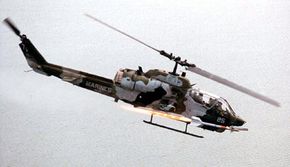Inflicting Damage: WDU-17/B Warhead
The current Sidewinder, as well as its replacement, the AIM-9X, carries the 20-pound (9-kg) WDU-17/B warhead. The WDU-17/B consists of a case assembly, a good amount of PBXN-3 high explosive, booster plates, an initiator device and nearly 200 titanium fragmentation rods. When the target detector senses the enemy aircraft, it activates the fuze mechanism, which sends an explosive charge through the initiator (a train of low-explosive material) to the booster plates. The explosive charge from the initiator ignites low-explosive material in the booster plate channels, which ignites explosive pellets surrounding the high-explosive material. The pellets ignite the high explosive, causing it to release a huge amount of hot gas in a short amount of time.
The powerful explosive force from this expanding gas blasts the titanium rods outward, breaking them apart to form thousands of metal pieces, all zipping through the air at top speed. If the warhead goes off within range of the target, the speeding titanium fragments will break apart the enemy aircraft's fuselage. In some cases, the missile may go right up the target's tailpipe, demolishing the aircraft from the inside. The WDU-17/B is referred to as an annular blast fragmentation warhead because the explosive force carries the metal fragments outward in all directions, in an annular, or ring-shaped, pattern.
Advertisement
